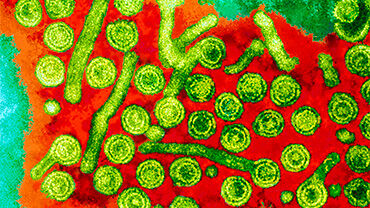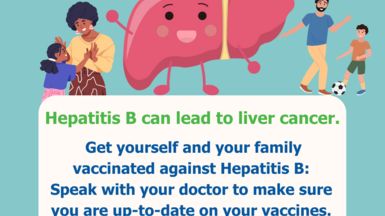High burden of Hepatitis B and C persists in the EU/EEA
Recent ECDC data show that despite progress in prevention and control efforts, the hepatitis B and hepatitis C viruses (HBV and HCV) continue to pose significant public health challenges in the European Union and European Economic Area (EU/EEA).
The latest estimates suggest that there are around 3.6 million individuals chronically infected with HBV and 1.8 million with HCV in EU/EEA countries.
Andrea Ammon, ECDC Director said:
“Behind these statistics are countless individuals and families impacted by the burden of hepatitis B and hepatitis C infections. Robust monitoring and surveillance, targeted prevention and control interventions, and strong collaboration across countries is essential to reduce the impact of the diseases caused by these viruses and to foster progress towards their elimination”
The prevalence of both infections varies considerably across countries and various populations, with a particularly high burden among different vulnerable groups such as people who inject drugs, people in prison and some migrant populations.
Effective HBV vaccination programmes and a range of other prevention and control strategies including harm reduction measures targeting people who inject drugs contributed to decreased incidence of new HBV and HCV infections across Europe. However, challenges remain, particularly in services for vulnerable groups.
An urgent scaling-up of testing is needed to identify people with HBV and HCV early in the stages of their infection, and to link these individuals to care in order to reduce complications such as cirrhosis and liver cancer.
The COVID-19 pandemic had a significant impact on rates of HBV and HCV notifications in 2020 and 2021, with disruptions in services leading to a decrease in diagnosed cases. The subsequent increase in notifications after 2021 can be attributed to the end of restrictions, recovery of health systems, testing initiatives, and changes in surveillance.
The prevention of transmission of hepatitis B from mother to child is critical to elimination. Whilst the data indicates good overall progress across the region in terms of antenatal screening and the coverage of the HBV vaccine, some countries still need better data and scaling up of programmes.
In terms of diagnosis, the data clearly indicate that many cases of HBV and HCV remain undiagnosed and high numbers are diagnosed late in the course of their infection when it has already led to cirrhosis or liver cancer.
Regarding treatment, data show high levels of viral suppression for HBV and cure of HCV infection among those treated. However, many of those living with HBV and HCV infections are still not receiving treatment, including some who have been diagnosed, reflecting that greater efforts are needed to increase testing, as well as linkage to care.
ECDC reaffirms its commitment towards the global elimination targets for HBV and HCV set by the World Health Assembly and will continue to closely collaborate with countries and partner organisations, help strengthen monitoring efforts and share good practices across the region on hepatitis prevention and control.







